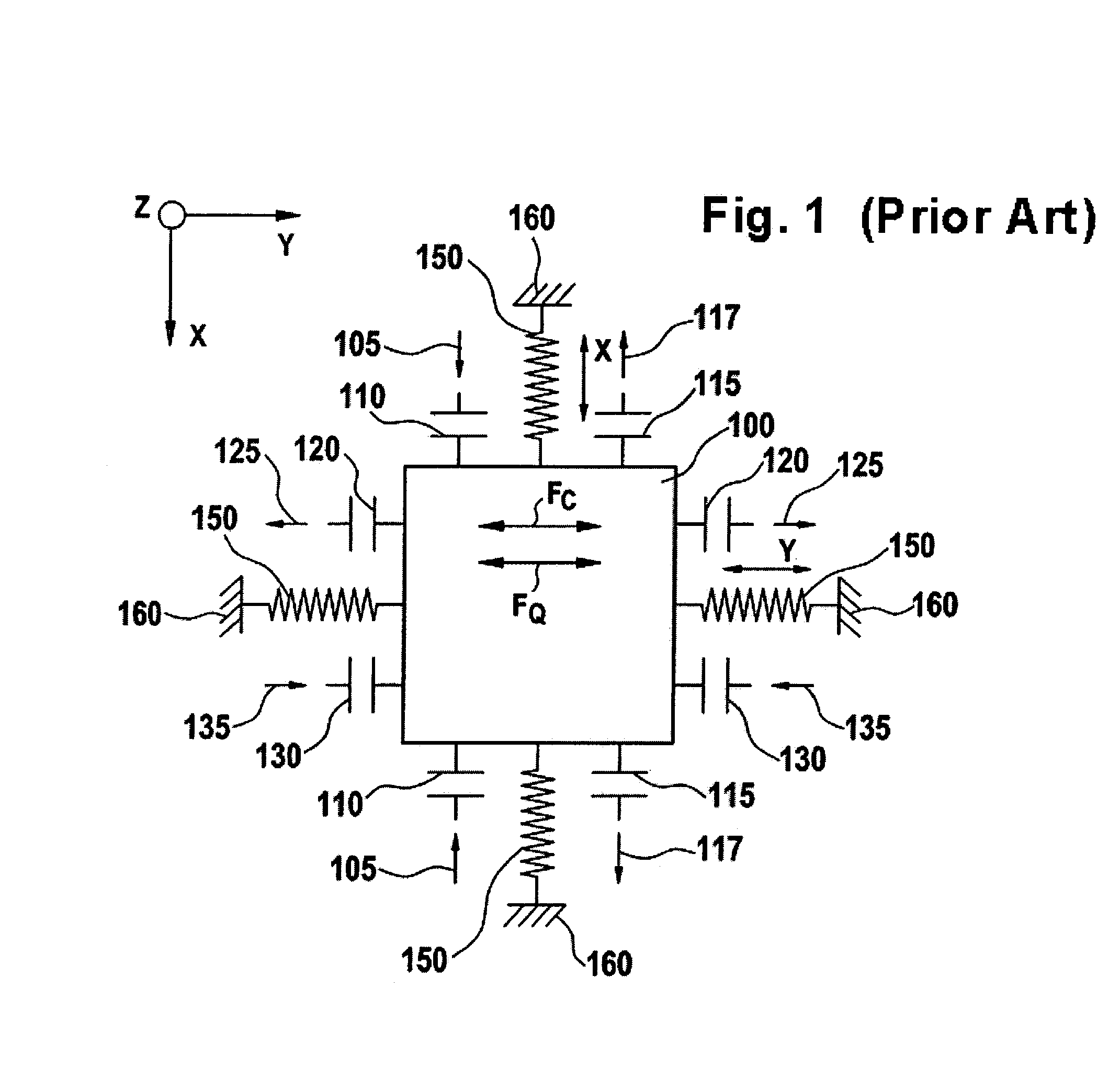Micromechanical rotation rate sensor having error suppression
a technology of rotation rate sensor and micromechanical technology, which is applied in the direction of acceleration measurement using interia force, turn-sensitive devices, instruments, etc., can solve the problems of suppressed electronically, main axis systems of mass tensors and spring stiffness tensors no longer agreeing with kd, and increasing dynamic range demands, so as to reduce the capture range of regulation, reduce the output noise of the sensor, and reduce the resolution of the regulation
- Summary
- Abstract
- Description
- Claims
- Application Information
AI Technical Summary
Benefits of technology
Problems solved by technology
Method used
Image
Examples
Embodiment Construction
[0034]FIG. 1 schematically illustrates a micromechanical functional part of a conventional rotation rate sensor. What is illustrated is a seismic mass 100 which is suspended using spring elements 150 on a substrate 160. Spring elements 150 are arranged on seismic mass 100 such that seismic mass 100 is able to execute a driving vibration in a first direction x and a deflection in a second direction y that is perpendicular to it. For the driving of seismic mass 100 in the first direction x, driving devices 110 are provided. These driving devices 110 may be arranged capacitively, for example. Therefore, they are illustrated schematically as capacitors. A drive signal 105 is supplied to driving device 110. On seismic mass 100, additional drive measuring devices 115 are provided, which measure the deflection of seismic mass 100 in first direction x, and generate from it a drive vibration signal 117. Drive measuring devices 115, in this example, are also arranged to be capacitive, and are...
PUM
 Login to View More
Login to View More Abstract
Description
Claims
Application Information
 Login to View More
Login to View More - R&D
- Intellectual Property
- Life Sciences
- Materials
- Tech Scout
- Unparalleled Data Quality
- Higher Quality Content
- 60% Fewer Hallucinations
Browse by: Latest US Patents, China's latest patents, Technical Efficacy Thesaurus, Application Domain, Technology Topic, Popular Technical Reports.
© 2025 PatSnap. All rights reserved.Legal|Privacy policy|Modern Slavery Act Transparency Statement|Sitemap|About US| Contact US: help@patsnap.com



